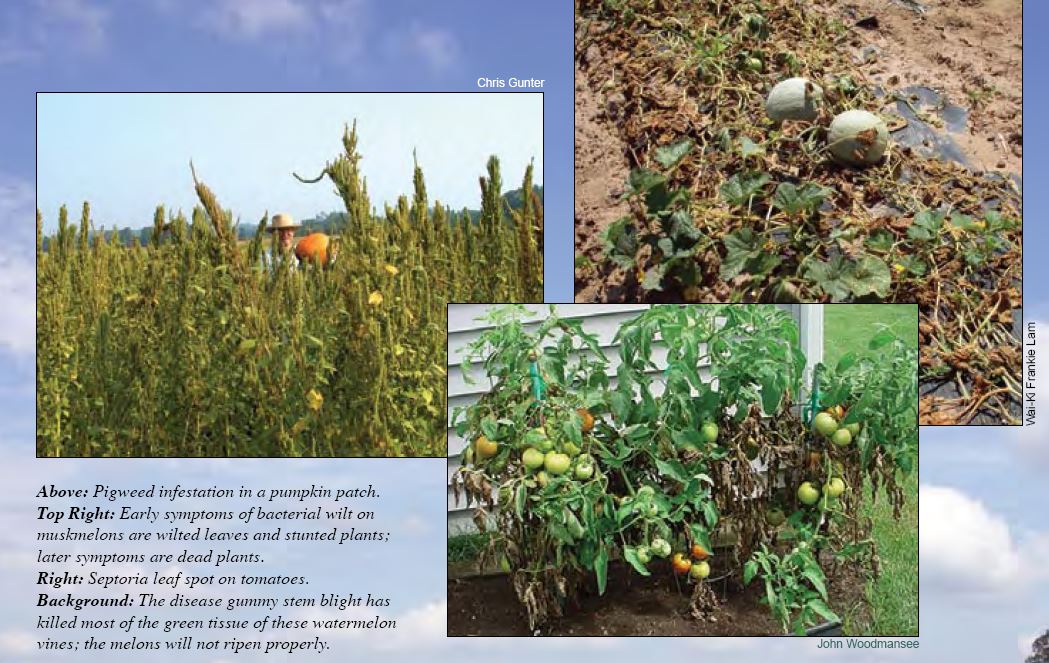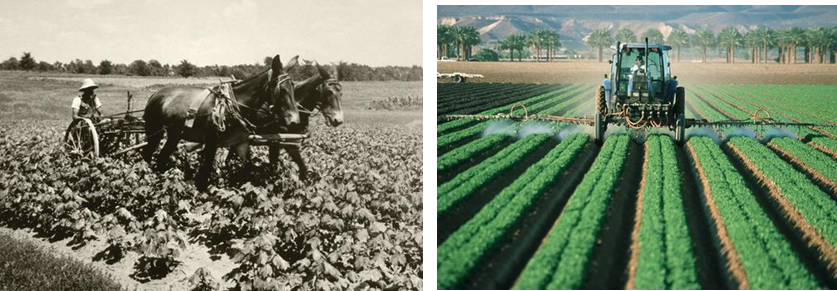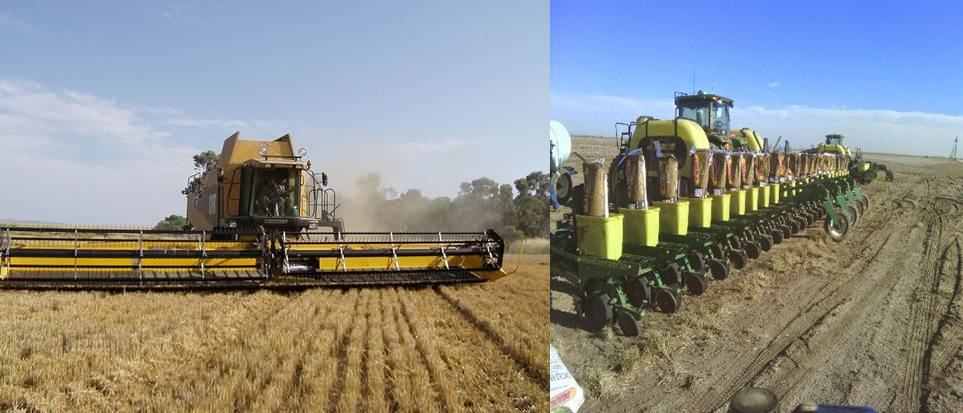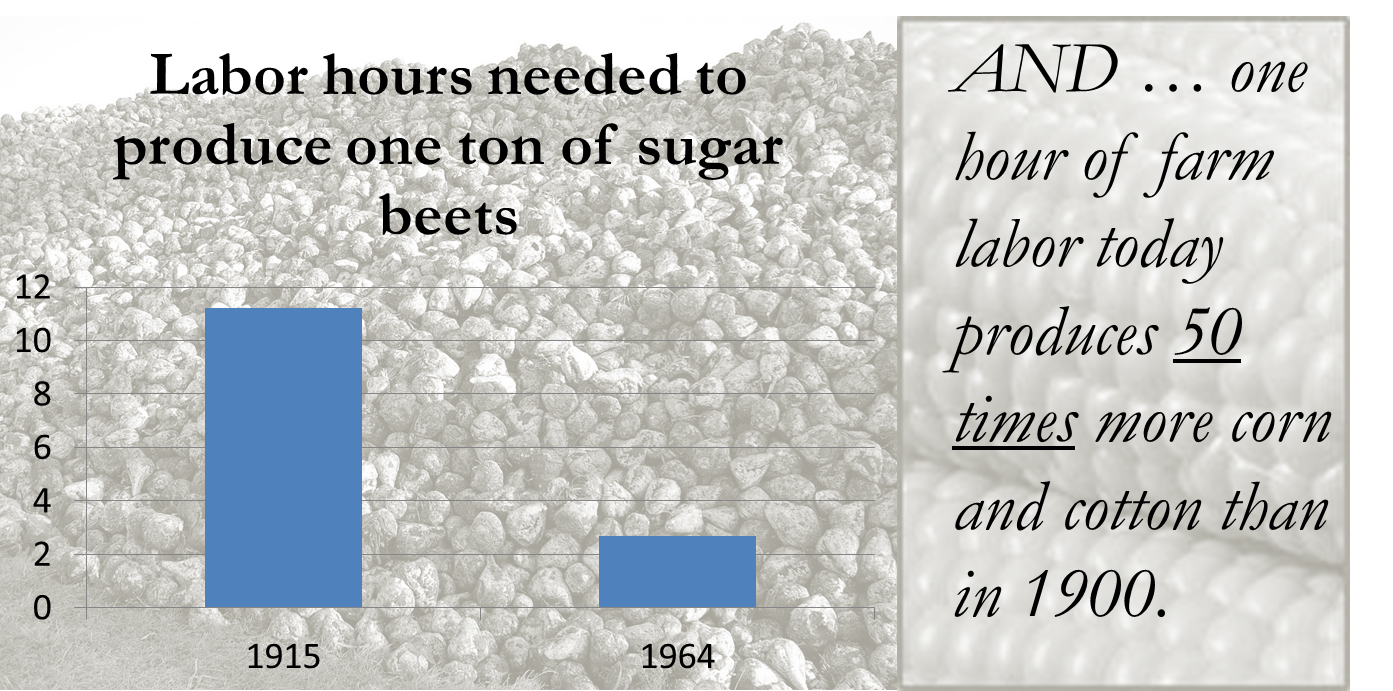

The Industrialization of Agriculture
Part 4: Consequences of size and specialization
Consequences of chemical fertilizer
Prior to chemical fertilizer farmers, fertilized a field with manure from cattle that had grazed elsewhere (thereby transporting some nutrients from that other place to the field) and with legumes, which are a family of plants able to snatch nitrogen from the atmosphere and place it in the soil in a plant-accessible form. In this system, farmers were forced to either exhaust a soil or diversify. Either wheat could be planted every year until the field held no more nutrients, or it could be alternated with legumes and occasional manure applications. What a farmer did this year had considerable consequences for the fertility of the soil next year.
This is less true today, as all crop nutrients can be purchased from a fertilizer company. Even if a crop exhausted all the nitrogen, phosphorus, and potassium this year, each of these three nutrients can be purchased and applied before the next planting, and the farmer need not even experience a reduction in yields. Frequent harvesting of crops from a field will tend to alter the pH of the soil, eventually rendering it unable to support agriculture. Usually, soils become more acidic. In the past, farmers had to rotate the crops they used, finding different crops (Notice I made the word crop plural) which were better acclimated to a soil’s evolving pH level. Now, a relatively inexpensive application of lime will restore the pH back to its optimal value. Though lime is not a nutrient, plants cannot consume nutrients if the soil pH is unfavorable, so when discussing fertilizers I typically include lime.
The consequence of industrial fertilizer, then, is less diversification on the farm. Rotations in the days before chemical fertilizers could become quite sophisticated. One in the late eighteenth century described one such rotation as: canola, barley, clover, wheat, barley or oats, turnips, wheat, barley, and then a legume used for hay or grazing.(L6) Today, it is normal for farms to either plant the same crop year after year or use a rotation with a maximum of three different crops.
Figure 1—Applying nitrogen fertilizer
.jpg)
It should be noted that agriculture did not make a discrete switch from manure/crop rotations to chemical fertilizer. The nineteenth century is replete with nations struggling to gain dominance over certain South American regions where particularly large amounts of guano (bird and bat manure) or saltpeter could be found. These transitional fertilizers were certainly useful, but the advent of chemical fertilizers has made them more of a historical agricultural practice.
Figure 2—Chemical fertilizer use in the U.S.

Chemical fertilizers also cause us to think less about soil erosion. In a way, chemical fertilizers create new soil. A simple application of nitrogen, phosphorus, and potassium (along with lime to adjust the soil pH) can completely restore many infertile fields. Think about what this means. Corporations are reaching up into the sky for nitrogen and deep into the earth for phosphorus and potassium so that dirt becomes soil. The relative ease in creating new soil makes us neglect the large amounts of soil erosion that takes place. This is a problem because while it is easy to replace these three nutrients in the soil, it harder to do for a host of other micronutrients like zinc and selenium.
Chemical fertilizer also results in water pollution, so much so that one could measure how well a nation is fed by the nutrients they eat or—tongue in cheek—the amount of water pollution that takes place from fertilizer runoff. It is not clear whether such pollution is unique to chemical fertilizers or if the same pollution would take place if the same amount of food was grown using livestock manure or crop rotations. After all, the pollution in the Oklahoma lake shown below did not result just from chemical fertilizers, but poultry manure also (most think the latter deserves most of the blame).
Figure 3—Lake Eucha in Oklahoma, polluted by chemical and manure fertilizer runoff

A reduced diversity of crops also makes it easier for pests to maintain higher populations, increasing the costs of protecting plants from insects, weeds, and fungal infections. Thus far this has not posed a big problem, as in the last century a host of synthetic pesticides has made protection from pests increasingly cheaper. This is another consequence of industrialization.
Types of pesticides
- Insecticide—pesticide used to prevent damage from insects
- Herbicide—pesticide used to prevent weed growth
- Fungicide—pesticide used to prevent fungal infestation in plants
- Antimicrobials—pesticide used to thwart harm from bacteria and viruses
Diversity is the enemy of pests. While farmers have always relied on some sort of pest mitigation, even something as simple as a scarecrow, farmers of the past had no choice but to rotate their crops to break the cycle of pests. If you plant corn year after year without pesticides, worms that eat the corn can lay eggs in the very field that will feed their offspring, making the persistence of that worm inevitable. However, if you follow corn with, say, soybeans, the new generation of worms will hatch only to find a field without food. So specialization in a few crops increased the need for better pesticides, but it is also true that the better pesticides being produced increased the degree to which farmers could specialize.
This specialization has led to what we call monocultures, where only one crop is planted on the same field year after year. In the southeastern U.S. and West Texas this might be cotton, in Oklahoma it might be wheat, and in Iowa it might be corn. On the one hand these monocultures leave much of our food vulnerable to unusually high pest infestations, but on the other hand we have monocultures because our pesticides work so well. Thus, the existence of monocultures can be interpreted as a vulnerability in the food system, or a signal of its robustness.
Figure 4—Pest damage to crops

So long as we keep producing effective pesticides and regulate them safety, then the reduced diversity caused by industrialization is not a problem. However, the growth of the organic market makes it clear that some people are not convinced that we are regulating pesticides safety. As the organic market grows, it unravels some of the industrialization that has taken place and will begin increasing the diversity of crops raised on any one field. Yet despite the rise of organic foods, pesticide use exhibits little sign of waning.
Figure 5—Pesticide use in the U.S.

Agriculture is in a perpetual war against pests. Just like modern warfare, our tools have become more powerful and scientific over time, but the enemy has evolved defenses against these new weapons. It was only a century ago when a farmer might wade into a field of corn, attempting to drive away grasshoppers with a bushy branch.(P1). Today, a synthetic pesticide (meaning a chemical made using advanced chemistry in a factory) exists that can thwart virtually any insect. A century ago the most effective way to control weeds was to break the ground between rows of crops, uprooting the weeds (as shown in the left picture below). This is referred to as “cultivation.” Although the term is sometimes used for other activities which help plants thrive. Cultivation is still used today, but we also have another tool: herbicides. For almost any weed there exists a chemical that can kill it without harming the crop. This chemical is easily applied in liquid form, as shown in the right picture below.
Figure 6—Historical (left) versus modern (right) weed management strategy

All living organisms are the result of evolution, where infrequent genetic mutations periodically lead to an organism better suited to its environment, allowing it to produce more offspring than those without the mutation. Eventually, most of the species will then have this mutation and will appear and behave differently than its ancestors. A field is simply a different type of environment where evolution still takes place. Weeds, insects, and fungi all evolve to resist those pesticides which had killed its ancestors. As pesticide resistance builds, humans must invent new forms of pesticide to control the newly evolved pests.
Just as an arms-race between nations led to the atomic bomb, some fear this escalating struggle will only lead to new, more dangerous pesticides. Texas cotton farmers face the difficulty of dealing with a form of Pigweed that acts as “super–weed”, a weed that is resistant to most varieties of herbicides. Not only is it difficult to control using standard herbicides, it can grow three inches in a single day! Farmers are not defenseless. The herbicide Propazine can kill the Pigweed, but it is not clear whether Propazine is safe to use and the EPA has not approved its use in cotton. Texas farmers and state regulators are requesting the EPA to allow Propazine to be used on Texas cotton, and as of June 20, 2014, the EPA was still making up its mind. Some see this as the normal procedure in pest management, while others see it as a sign that industrial agriculture’s reliance on pesticides, and the arms-race against pests, is leading to increasingly unsafe pesticides.
Quotation 1—Consequences of pesticide use
Pigweed is a serious problem for farmers ... But Propazine is not the solution. We need to have farm practices that don’t create resistant weeds in the first place, so we don’t have to resort to toxic herbicides to treat them.
Bill Freese of the Center for Food Safety. Quoted in: Newman, Jessie. June 20, 2014. “Texas Tries Last-Ditch Attack on Super Weed.” The Wall Street Journal. B1.
The concern is legitimate, but to be fair, not all new pesticides are more toxic. The herbicide glyphosate (sold under the brand Round Up) is the most widely used pesticide in the U.S., as it can kill virtually every plant except for certain genetically-modified crops, but is arguably less toxic to humans than an equivalent amount of caffeine.(N3)
Mechanization
The most obvious difference between farms in 2014 and 1914 is tractors and combines, where fossil fuels magnify the muscles of farmers, allowing them to plow deeper and faster, plant more precisely, and harvest a wide area of grain so quickly that custom harvesters (people who harvest other farmers’ crops for a fee) can begin harvesting in Texas where crops mature earlier and harvest their way north so fast that they reach Montana just in time to harvest its grain also.
Figure 7—Combine (left) and seed planter (right)

Mechanization not only leads to lower food prices through greater farm efficiency, it reduces diversification. Think back to the polyculture used by the Iroquois, where squash, beans, and corn were raised in the same area. Obviously, one could not use the Three Sister system and expect to use combines to harvest the beans or corn. Mechanical harvesters only work well when there is one single crop in the field. A number of mechanical planters and harvesters had existed before the nineteenth century, but these either operated using clumsy steam engines or still relied on the power of workhorses and mules. Once the internal combustion engine fully replaced work animals, not only did it provide more power but it saved the farmer from having to raise feed for her animals, which itself freed 93 million acres of cropland which could be diverted from animal to human food.
Figure 8—Adoption of combines in U.S.

This lecture has considered three inputs of industrialized agriculture: fertilizers, pesticides, and machines. It is interesting to note that some food activists are eager to do away with fertilizers and pesticides, but very few call for doing away with tractors and combines. This is probably because most of us could not even imagine farming without them. Each hour of farm labor produces much more food than before, so much so that less than 2% of the U.S. population is able to feed Americans and other parts of the world. Certainly, not all of this rise in labor productivity is attributable to mechanization alone, but it certainly deserves the lion’s share.(G1,P1)
Figure 9—Benefits of Mechanization

Another consequence of industrialization is its impact on the kinds of foods we produce. Everyone knows that locally produced tomatoes taste better than those in a commercial grocery store. Why? Much has to do with how the tomatoes are harvested. If you harvest tomatoes by hand then you can focus largely on producing a superb tasting tomato. Harvesting tomatoes by hand is expensive, though. As machinery improved in the 1950s and farm labor became more expensive, efforts were made to develop machinery that would help harvest tomatoes. Engineers couldn’t simply make a new machine to harvest the traditional tomato variety, for two reasons. The first is that our garden-variety tomatoes are delicate and cannot handle the tough steel of a machine. Second, you will note that tomatoes in a garden do not mature all at once. One vine will continue to produce tomatoes for a month or more. This is a problem because when a machine harvests tomatoes it destroys the whole plant. So when the harvesting machine was being developed, new varieties of tomatoes had to be bred for compatibility. These new varieties would all produce many ripe tomatoes at the same time and were protected by a tougher skin. Because tomato breeders had to focus on achieving early, simultaneous maturity and tougher tomatoes, they had to forego taste.
Figure 10—Machines even harvest tomatoes

This machine was said to have saved the California tomato industry because it became commercial just as tighter immigrant labor restrictions were being enacted. Indeed, the expense of labor provides a perpetual incentive to replace humans with machines. However low wages for unskilled farm labor may seem, machines often cost less.
Quotation 2—Machines born out of labor shortages
When labor cannot be found, humans make a logical decision: they replace it with machinery. Americans had a long-standing tradition of doing so. For most of the nineteenth century, for example, the country suffered chronic shortages of labor that fostered a national passion for mechanization and automation. So, too, in the 1940s. Factory farming already had plenty of support both in and out of agriculture, and World War II affirmed that enthusiasm.
—Ogle, Maureen. 2013. In Meat We Trust. Houghton Mifflin Harcourt: NY, NY. Page 106.
Machines don’t just allow us to harvest the same crop more efficiently. They often force us to change the crop we are raising. A similar event has taken place in the dairy industry. One worker can milk twelve cows the old way, by hand. Or, one can milk 200 cows in a modern milking parlor equipped with automatic milking machines. A vast improvement—however, the milkers are designed to fit on an udder of a certain type, and some cow udders just are not compatible. The machine can be placed on the udder but it either falls off or doesn’t maintain a good vacuum, and therefore doesn’t suck all the milk. When they teach students how to judge the desirability of a milk cow, they are taught to pay particular attention to the shape of the cow’s udder. If it doesn’t look like it would hold an automatic milker, it might be better to sell the cow before you invest much money in her.
Mechanization has even entered parts of agriculture many thought impossible. Visit any vineyard of high repute and you are likely to learn that they still harvest their grapes by hand. Because they focus so intensely on the quality of the grape, they cannot afford the bruising that a mechanical harvester would perform on the grape. The grape harvester below has been used for decades, but like the tomato, it can only be used for grapes that ripen all at once, as it destroys the plant as it harvests, and requires the grape to possess a tough skin. These grapes are probably those used to make grape jelly.
Figure 11—Machines even harvest grapes

All that has changed with a new type of grape harvester, whose fiberglass fingers can gently shake the grape without causing it much injury and without destroying the plant. Now, even the finest wine may come from grapes harvested by a fiberglass finger, not those of a person.
In the last two decades, mechanization has demonstrated an ability to become even more creative. As shown in this video they now have tractors that drives, robots that apply fertilizers, and a machine that milks cows without any human labor at all.
Figures
(1) From NRCS photo gallery. Picture taken by Lynn Belts in 1999.
(2) Screenshot from reference in F3.
(3) Photograph provided by an anonymous employee of the state of Oklahoma.
(4) Used with permission from the Purdue Pesticide Programs. Taken from the document The Benefits of Pesticides: A Story Worth Telling.
(5) Screenshot from reference in L3.
(6) Left picture taken from NRCS Photo Gallery on June 24, 2014 at http://photogallery.nrcs.usda.gov/netpub/server.np?find&catalog=catalog&template=detail.np&field=itemid&op=matches&value=445&site=PhotoGallery. Right picture taken from NRCS Photo Gallery on June 24, 2014 at http://photogallery.nrcs.usda.gov/netpub/server.np?find&catalog=catalog&template=detail.np&field=itemid&op=matches&value=1759&site=PhotoGallery.
(7) Combine, left: By Cyron (flickr.com) [CC-BY-2.0 (http://creativecommons.org/licenses/by/2.0)], via Wikimedia Commons. Planter, right: Used with permission from Pat Long.
(8) Data taken from P1.
(9) Pictures taken from Wikimedia Commons and Public Domain Clip Art.
(10) ארכיון גן-שמואל [CC-BY-2.5 (http://creativecommons.org/licenses/by/2.5)], via Wikimedia Commons.
(11) Data from E3. Photo by: By John from UK (Harvesting the Grapes in Duras) [CC-BY-SA-2.0 (http://creativecommons.org/licenses/by-sa/2.0)], via Wikimedia Commons.